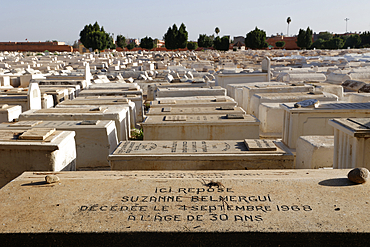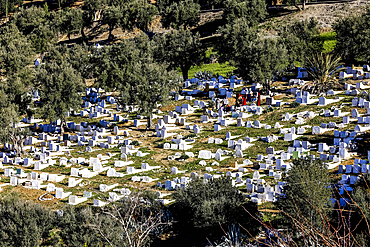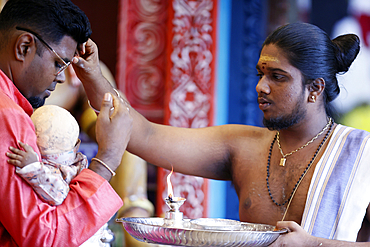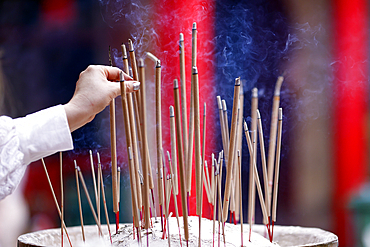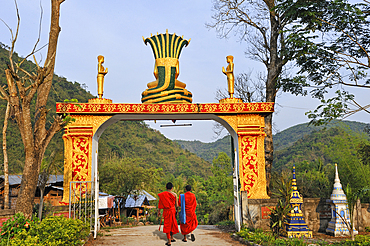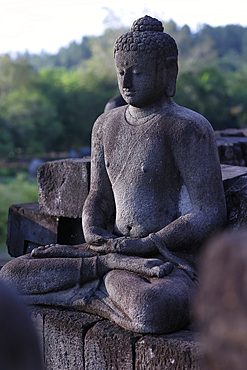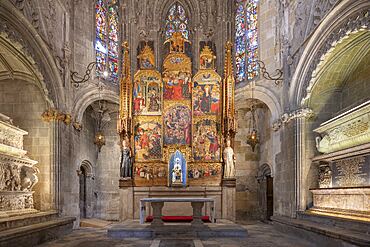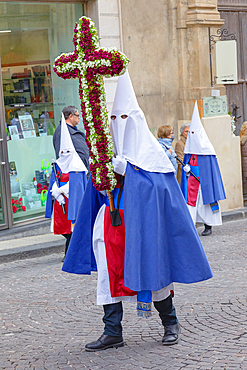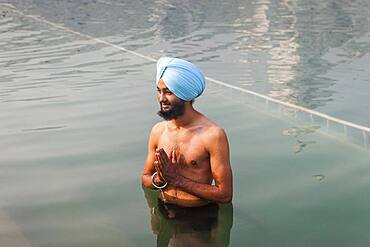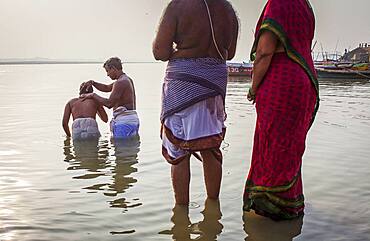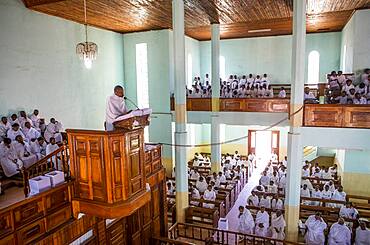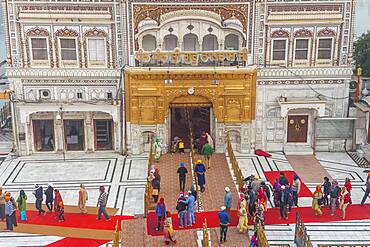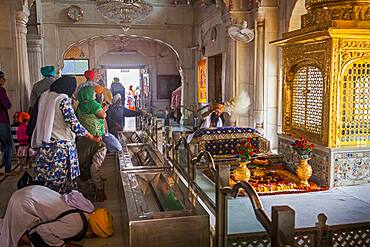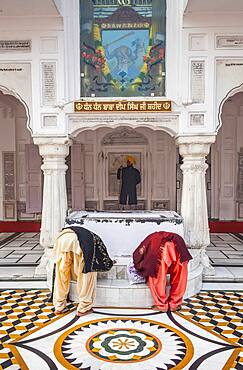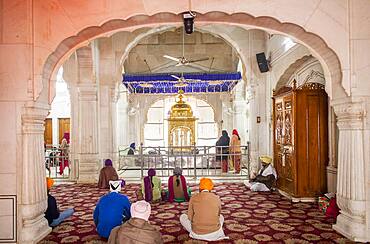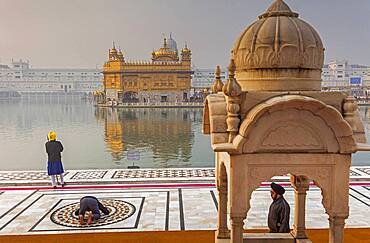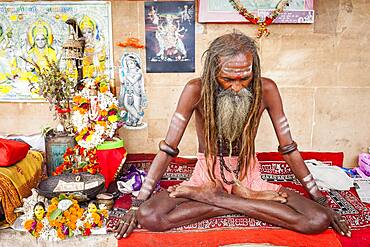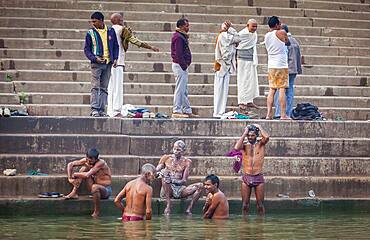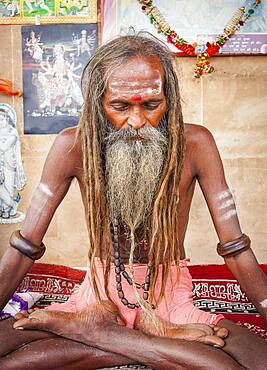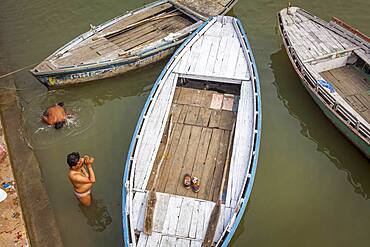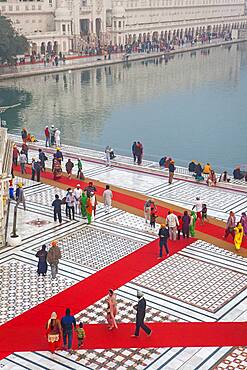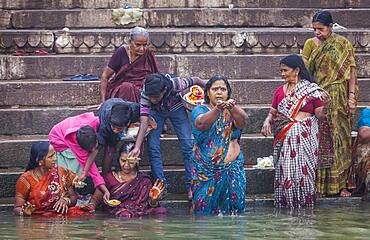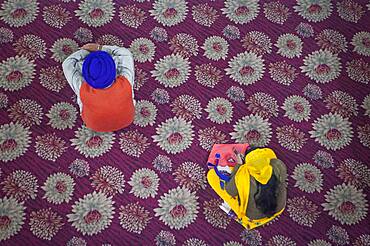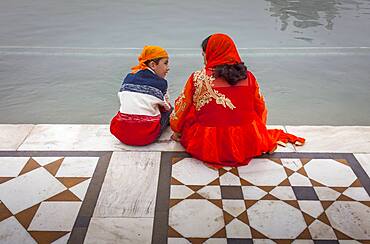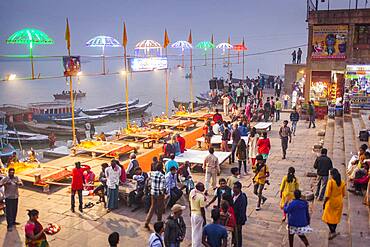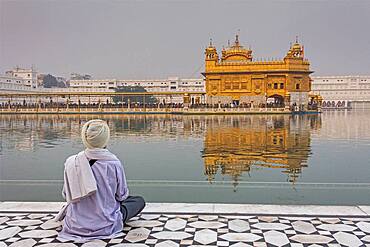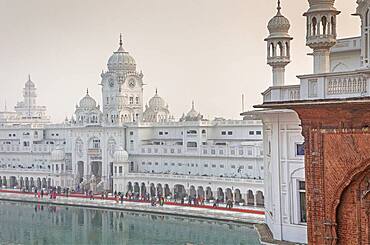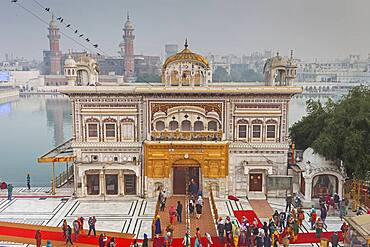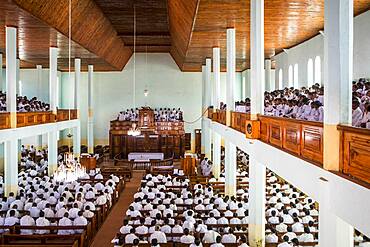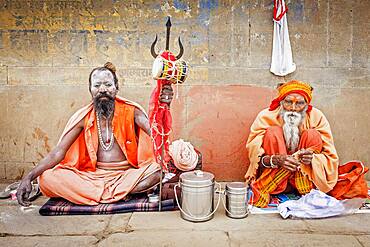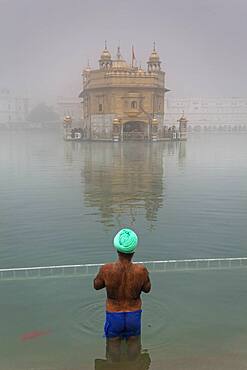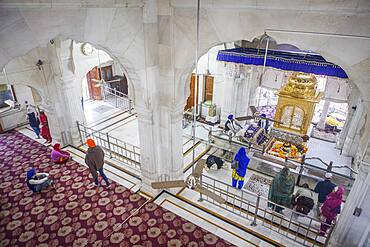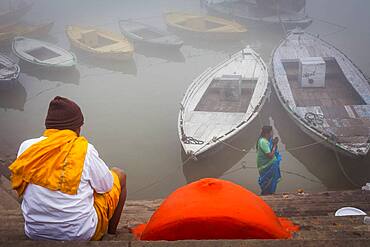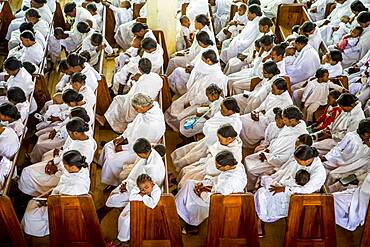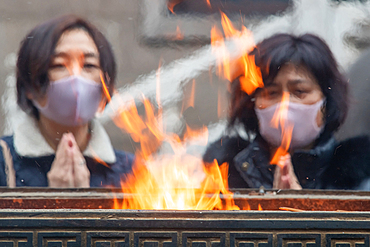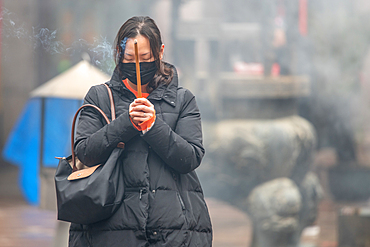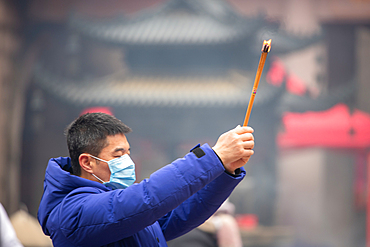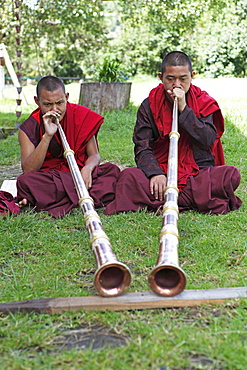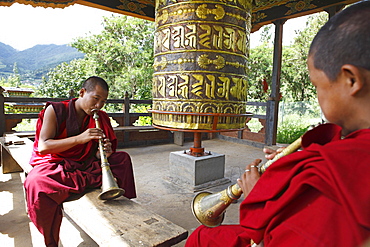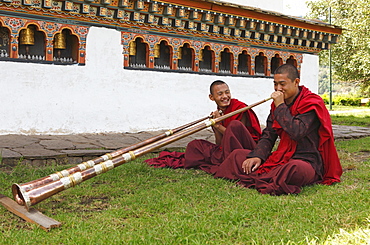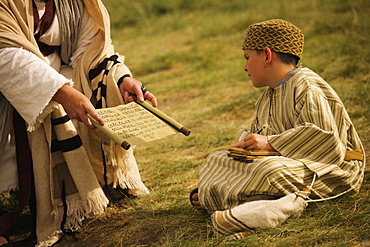Results
« Previous 1 2
114 results found
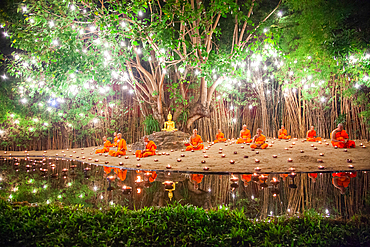
Makha Bucha (Magha Puja) celebrations, monks pray under illuminated Buddha statue annually at Wat Phan Tao temple, Chiangmai, Thailand
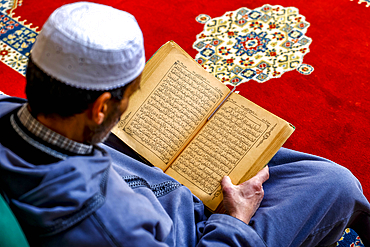
Faithful sitting and reading Kuran in Moulay Driss I Mausoleum (Maqam Moulay Idriss), Moulay Idriss Zerhoun, Morocco

Burial Ground for Slaves and Free Blacks up to 1854, containing 180 graves, St. Peter's Churchyard, St. George, Bermuda
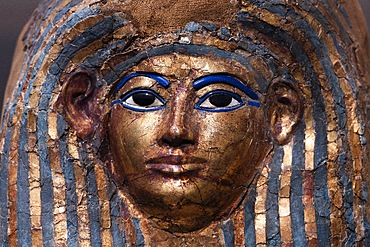
Merit's Funeral Mask, from Tomb of Kha and Merit, Deir el-Medina, Museo Egizio (Egyptian Museum), Turin, Piedmont, Italy

The Sermon of Saint John the Baptist, 1685, Church of Gesu (Buon Consiglio), Museum of Sacred Art, Lecce, Salento, Apulia, Italy

Aside from a life of simplicity focus on divine, many sadhus engage in a diverse array of practices both internal external in order to attain higher states of awareness consciousness. This sadhu chosen hatha yoga shows results--a well-disciplined, strong body--while holding kukkuta asana, or cock posture. India
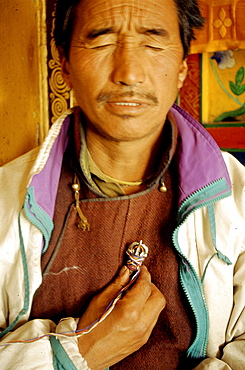
N month of november 7 days before full moon a sacred ceremony is held in various monasteries throughout himalayas by traditional healers known as amchis. They bring their precious herbs, minerals special animal glands to be blessed. A selected amount of herbs is placed in a copper vessel placed on monastery alter. 7 days amchis go through an elaborate potenization of these medicines through prayer other practices. Seen here is of amchis holding a dorje (sacred object used cutting through obscurations) which is lined from a vessel containing various herbs sitting on monastery alter to heart chakra. Chang tang nyee, ladakh, indi
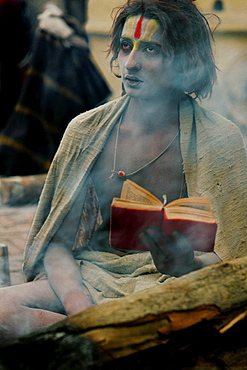
A young sadhu reads holy scripture near fire. Worship is part of daily life. Some sadhus chant mantras. gayatri mantra is of several mantras that sacred incantations or mystical formulas of ancient literature. gayatri mantra given by brahma mentioned in rigveda is named after consort of brahma: o that glory- of savitri most high. Oh divine us mediate upon. it inspire understanding. goal of recitation is to attain realization. Practice lead mind into a transcendental union with deity.Pashupatinath, kathmandu, nepa
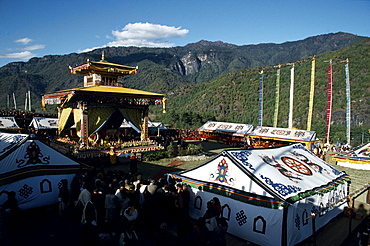
Purchang (cremation palace) of h.h. Dilgo khyenste. Bhutan. H.h. Dilgo khyentse rinpoche (1910-1991), tutor to present dalai lama revered as of greatest exponents of dzogchen- teachings of great perfection. Khyentse rinpoche®s purchang (cremation palace), satsam chorten, below paro takstang, bhutan, november 4, 1992 never forget swiftly this life will be over, like a flash of summer lightning or wave of a hand. that have opportunity to practice dharma, do waste a single moment on anything else, practice with your energy.oe h.h. Dilgo khyenste rinpoche, heart treasure of enlightened ones my delight in death is, greater than delight of traders at making vast fortunes at, or of lords of gods vaunt their victory in battle or of those sages have entered rapture of perfect meditative absorbtion. So just as a traveler sets on road when time come to go, i will remain in this world no longer, will dwell in stronghold of great bliss of deathlessness. -longchenpa, fourteenth- century dzogchen master
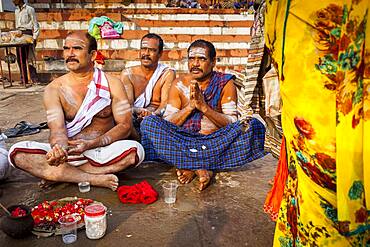
Pilgrims making a ritual offering, and praying, ghats in Ganges river, Varanasi, Uttar Pradesh, India.
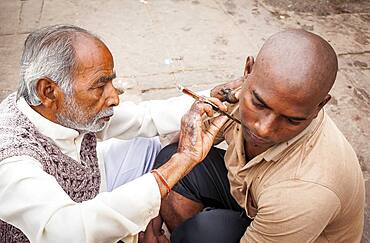
Barber shaving the head and beard of a pilgrim, Dashashwamedh ghat (main ghat), in Ganges river, Varanasi, Uttar Pradesh, India.
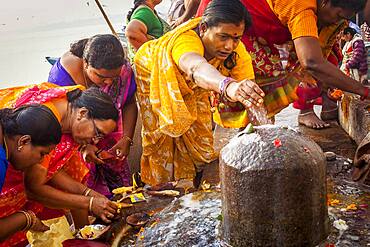
Pilgrims making a ritual offering, and praying, ghats in Ganges river, Varanasi, Uttar Pradesh, India.
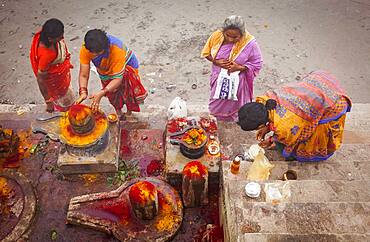
Pilgrims making a ritual offering and praying, ghats of Ganges river, Varanasi, Uttar Pradesh, India.
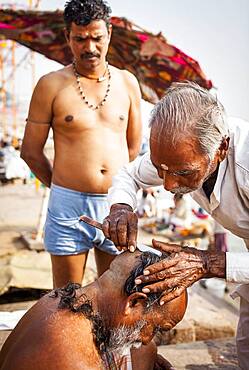
Baeber shaving the head and beard of a pilgrim, Dashashwamedh ghat (main ghat), in Ganges river, Varanasi, Uttar Pradesh, India.
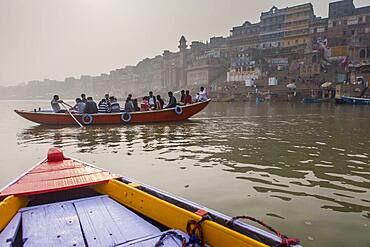
Pilgrims in a boat sailing and praying, Ganges river, in background the ghats, Varanasi, Uttar Pradesh, India.
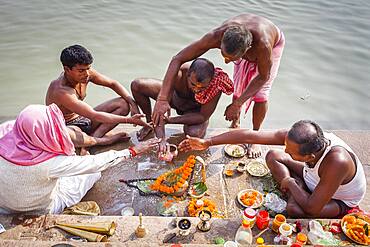
Pilgrims making a ritual offering and praying, ghats of Ganges river, Varanasi, Uttar Pradesh, India.
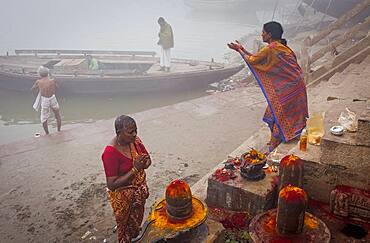
Pilgrims making a ritual offering and praying, ghats of Ganges river, Varanasi, Uttar Pradesh, India.
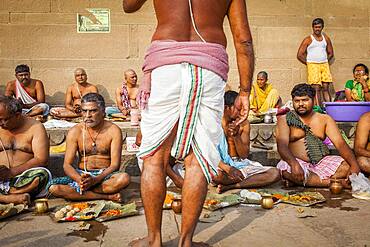
Pilgrims making a ritual offering, and praying, ghats in Ganges river, Varanasi, Uttar Pradesh, India.
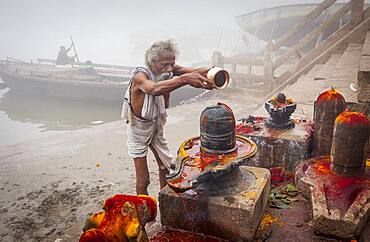
Pilgrim making a ritual offering and praying, ghats of Ganges river, Varanasi, Uttar Pradesh, India.
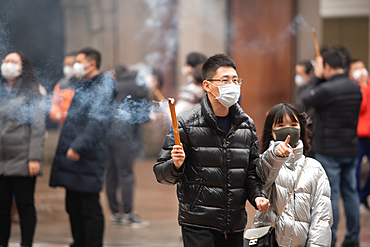
Shanghai, China, 23rd Jan 2020, People wearing masks and burning joss sticks to prevent catching the coronavirus

Group of teenages is engaged in fitness on pier by the lake or river. Young and positive girls go in for sports. Muslim in a hijab, african american and white females are doing stretching in the park

Group of teenages is engaged in fitness on pier by the lake or river. Young and positive girls go in for sports. Muslim in a hijab, african american and white females are doing stretching in the park

Group of teenages is engaged in fitness on pier by the lake or river. Young and positive girls go in for sports. Muslim in a hijab, african american and white females are doing stretching in the park

Group of teenages is engaged in fitness on pier by the lake or river. Young and positive girls go in for sports. Muslim in a hijab, african american and white females are doing stretching in the park

Group of teenages is engaged in fitness on pier by the lake or river. Young and positive girls go in for sports. Muslim in a hijab, african american and white females are doing stretching in the park
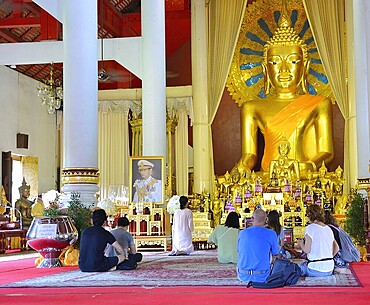
Tourists kneeling and praying in front of a giant golden buddha statue inside a buddhist temple in thailand, demonstrating reverence and cultural immersion

Kushti is a traditional form of South Asian wrestling popular in India, also known as Pehlwani. Wrestlers usually meet in an Akhara, a "wrestling ground" which is a place of practice, with facilities for boarding, lodging and training.They serve both as training schools and an arena for wrestlers to compete against each other. Akhara is not limited only to physical activities, but also involves religious practices, particularly the worship of the god Hanuman.

Kushti is a traditional form of South Asian wrestling popular in India, also known as Pehlwani. Wrestlers usually meet in an Akhara, a "wrestling ground" which is a place of practice, with facilities for boarding, lodging and training.They serve both as training schools and an arena for wrestlers to compete against each other. Akhara is not limited only to physical activities, but also involves religious practices, particularly the worship of the god Hanuman.

Kushti is a traditional form of South Asian wrestling popular in India, also known as Pehlwani. Wrestlers usually meet in an Akhara, a "wrestling ground" which is a place of practice, with facilities for boarding, lodging and training.They serve both as training schools and an arena for wrestlers to compete against each other. Akhara is not limited only to physical activities, but also involves religious practices, particularly the worship of the god Hanuman.

Kushti is a traditional form of South Asian wrestling popular in India, also known as Pehlwani. Wrestlers usually meet in an Akhara, a "wrestling ground" which is a place of practice, with facilities for boarding, lodging and training.They serve both as training schools and an arena for wrestlers to compete against each other. Akhara is not limited only to physical activities, but also involves religious practices, particularly the worship of the god Hanuman.

Kushti is a traditional form of South Asian wrestling popular in India, also known as Pehlwani. Wrestlers usually meet in an Akhara, a "wrestling ground" which is a place of practice, with facilities for boarding, lodging and training.They serve both as training schools and an arena for wrestlers to compete against each other. Akhara is not limited only to physical activities, but also involves religious practices, particularly the worship of the god Hanuman.
